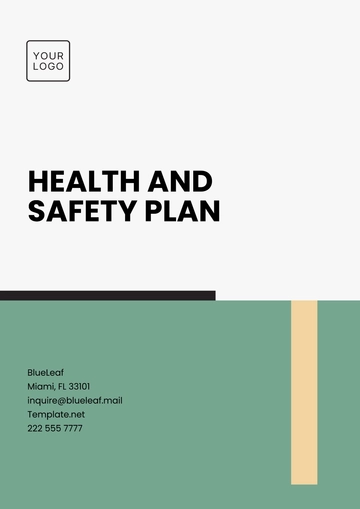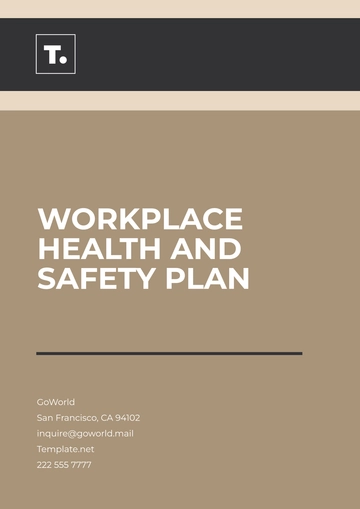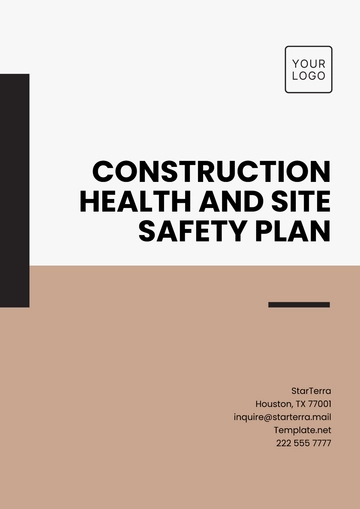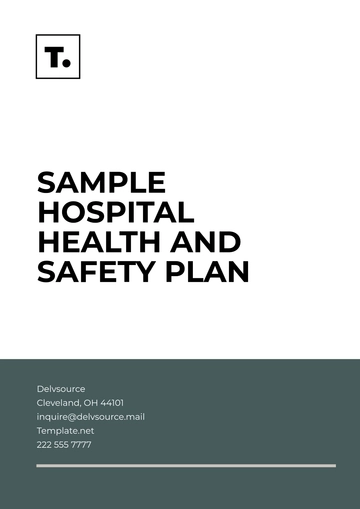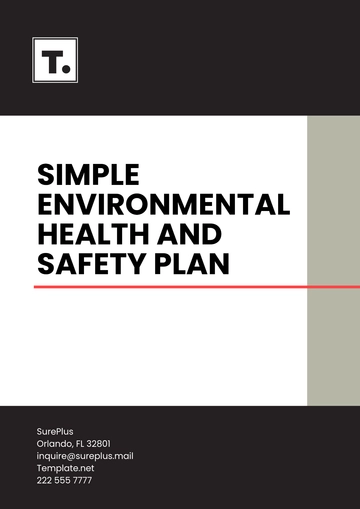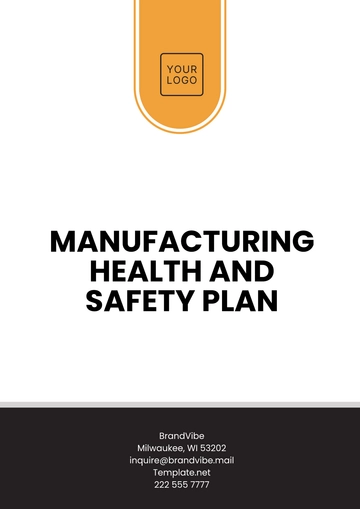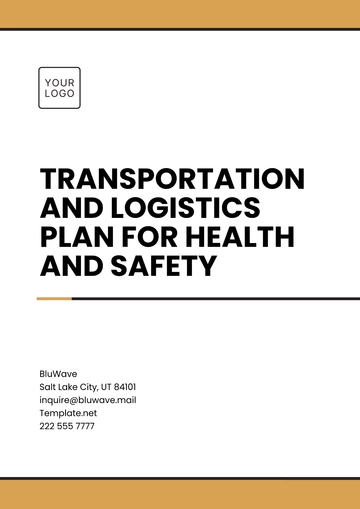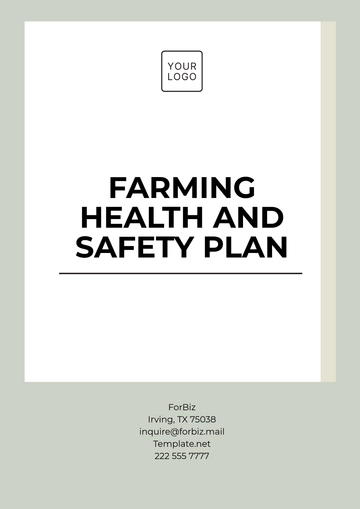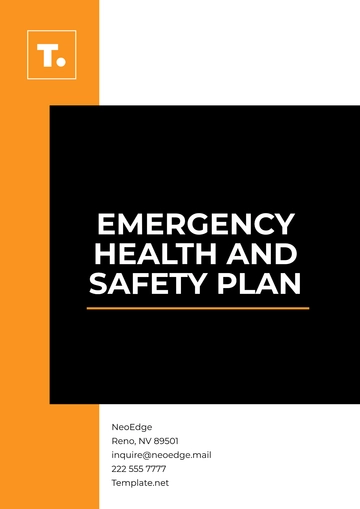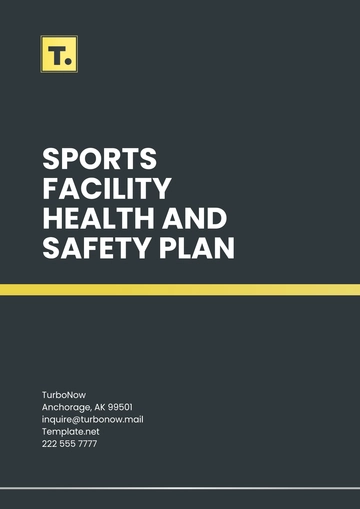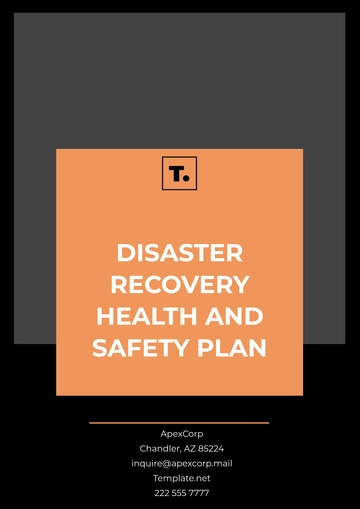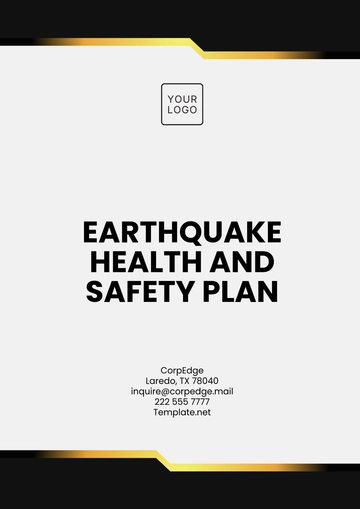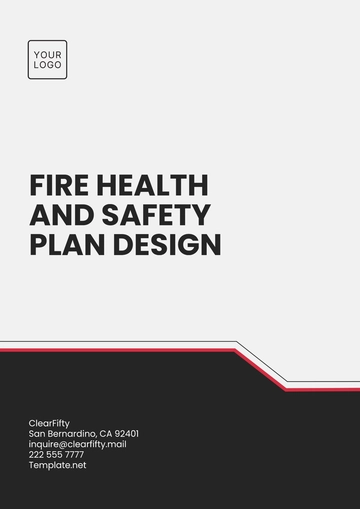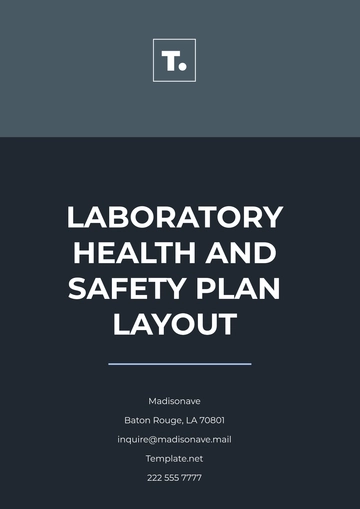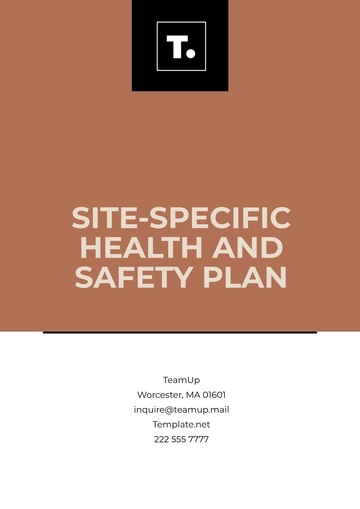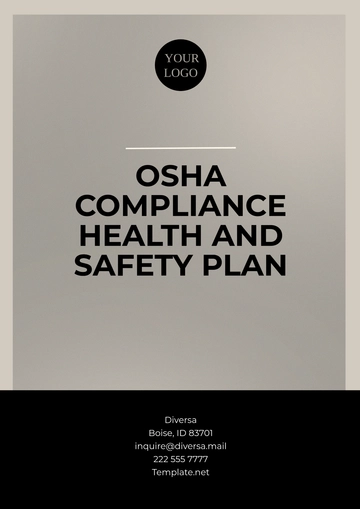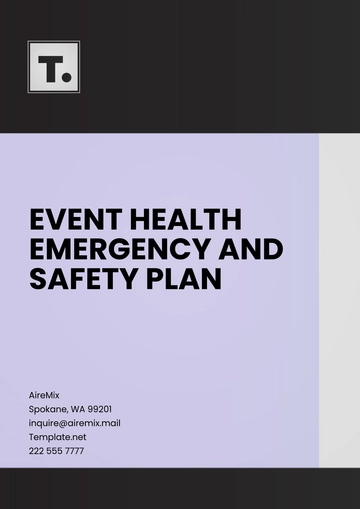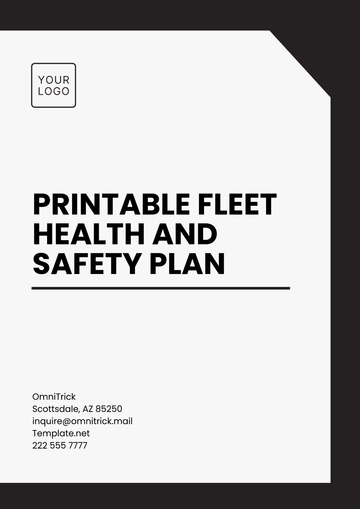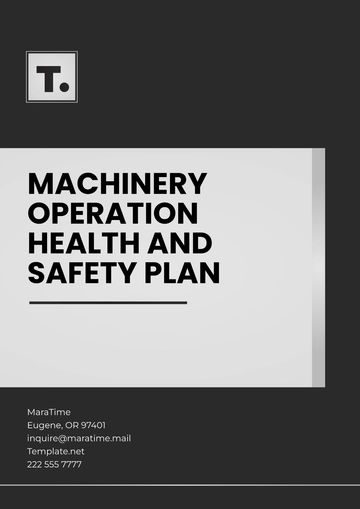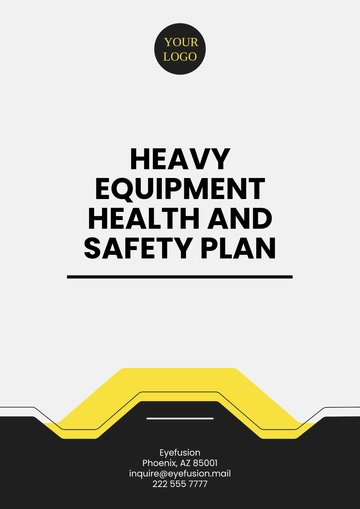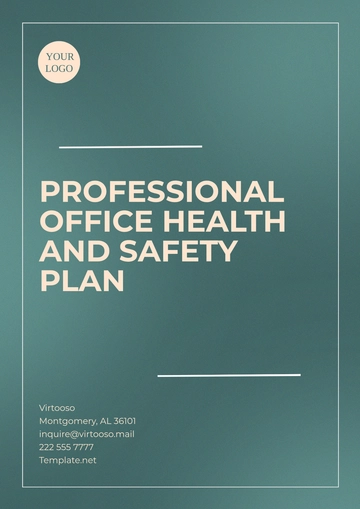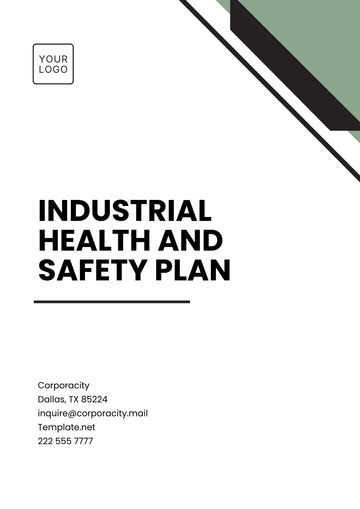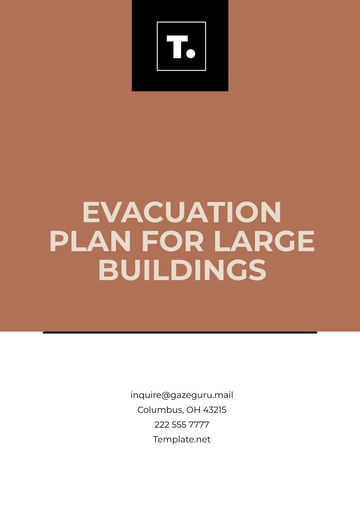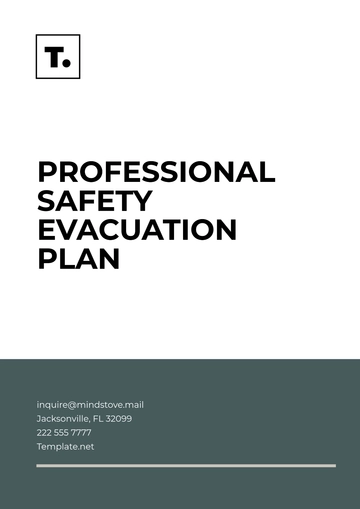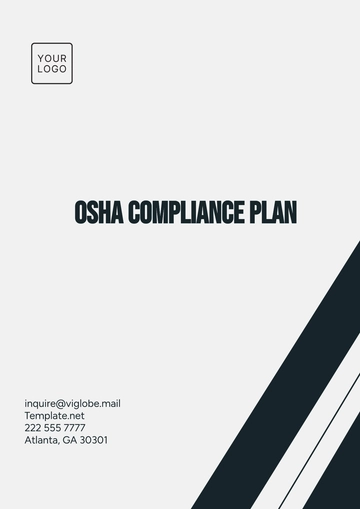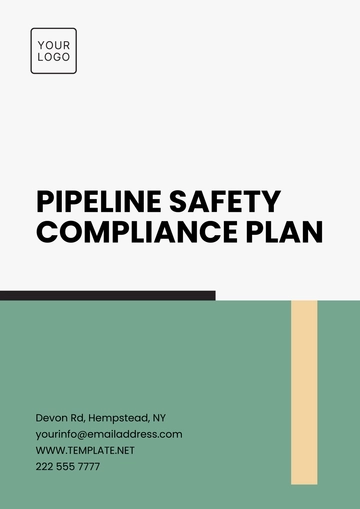Free PPE Inventory Management Plan

I. Introduction
This PPE Inventory Management Plan serves as a foundational document, embodying our commitment to creating a secure and health-conscious work environment. This plan becomes the cornerstone of our strategy to systematically acquire, track, maintain, and distribute Personal Protective Equipment (PPE).
A. Objectives and Significance:
Holistic Safety Approach
This plan is designed to embrace a holistic approach to safety, reflecting our dedication to the physical and mental well-being of our employees across all facets of their work.
Regulatory Compliance
By aligning with and surpassing relevant occupational health and safety regulations, we not only ensure the legal compliance of our practices but also demonstrate a proactive commitment to safeguarding our workforce.
Operational Efficiency
A well-managed PPE inventory contributes to operational efficiency. It enables swift response during emergencies, reduces downtime associated with equipment shortages, and enhances the overall effectiveness of our safety protocols.
Continuous Improvement
This plan is not static; it's a living document that evolves with our organization. It embodies our dedication to continuous improvement, allowing us to learn from experiences, stay ahead of emerging safety trends, and integrate the latest technologies and best practices.
B. Scope and Collaboration:
Across Departments
This plan encompasses all departments within [Your Company Name], recognizing that safety is a collective responsibility. It is a collaborative effort that involves every employee, from the frontlines to leadership.
Supplier and Stakeholder Collaboration
Our commitment to safety extends beyond our organizational boundaries. We collaborate closely with approved suppliers, stakeholders, and industry partners to ensure the highest standards in PPE acquisition and management.
C. Employee Empowerment:
Empowering Employees
This plan empowers our employees by providing them with the knowledge and tools to actively participate in their safety. Training programs and ongoing communication channels enable our workforce to make informed decisions about PPE usage.
Culture of Safety
We aspire to cultivate a culture where safety is not just a practice but a way of life. Through this plan, we reinforce the importance of personal responsibility and collective vigilance in creating a safe and secure work environment.
II. Risk Assessment and PPE Selection
In collaboration with the Health and Safety Committee, a risk assessment has been conducted to identify workplace hazards. Based on the assessment, the following types of PPE have been selected for different job roles and tasks:
A. Exposure
This category necessitates the use of chemical-resistant gloves, protective goggles, and aprons, all designed to provide comprehensive protection against hazardous chemical interactions.
B. Falling Objects
For environments where there is a risk of falling objects, the deployment of hard hats is mandatory. These are specifically engineered to offer significant head protection against impact.
C. Loud Noise
In areas where employees are exposed to high decibel levels, ear protection is crucial. This includes options such as earplugs or earmuffs, selected to attenuate harmful noise levels effectively, thus safeguarding auditory health.
III. Procurement and Budgeting
A. Supplier Evaluation
A Supplier Evaluation and Approval process has been implemented to assess suppliers based on quality, reliability, and adherence to safety standards. Only approved suppliers will be considered for procurement.
B. Quality Standards
PPE must meet or exceed the relevant Standards and Certifications, ensuring that the equipment provides the necessary protection. Regular quality checks will be conducted to verify compliance.
C. Budget Allocation
The annual budget for PPE procurement is set at [$50,000], subject to approval by the designated authority. Periodic reviews of budget allocations will be conducted to accommodate any changes in demand or pricing.
IV. Storage and Distribution
PPE storage areas have been designated as follows:
A. Main Storage
Located in [Location], equipped with secure cabinets for various PPE types. A real-time inventory tracking system will be integrated to streamline access and facilitate efficient distribution.
B. Satellite Storage
Additional storage areas are strategically placed for easy access in various departments. Each satellite storage location will be stocked based on the unique PPE requirements of the respective departments.
Distribution procedures include:
A.Request Forms and Approval
Employees will be required to fill out PPE request forms indicating the type and quantity of equipment needed. Requests will undergo approval by designated personnel to ensure alignment with job roles and safety regulations.
B. Automated Distribution
An automated distribution system will be implemented to streamline the process, minimizing delays and ensuring that employees have timely access to the required PPE.
V. Inventory Tracking and Audits
A computerized tracking system has been implemented to monitor PPE inventory levels. Regular audits will be conducted every quarter to:
A. Automated Alerts
The tracking system will generate automated alerts for low inventory levels, expiring equipment, or irregularities, enabling proactive management and replenishment.
B. Data Analytics
Utilization of data analytics tools to identify trends, patterns, and areas for improvement in PPE usage and inventory management. Reports generated from these tools will inform strategic decisions.
VI. Maintenance and Inspection
PPE maintenance and inspection will follow these guidelines:
A. Predictive Maintenance
Implementation of predictive maintenance strategies, leveraging technology to anticipate and address potential issues before they compromise the integrity of the equipment.
B. Employee Training
Training programs for employees on conducting visual inspections and recognizing signs of wear or damage. Training will empower employees to take an active role in ensuring the safety of their PPE.
VII. Training and Education
Training programs will be provided to all employees, including:
A. Interactive Workshops
Regular interactive workshops on the proper use and care of PPE, facilitating hands-on learning experiences and addressing common challenges faced by employees.
B. Scenario-based Training
Incorporation of scenario-based training to simulate real-world situations, enabling employees to practice the correct use of PPE in diverse and dynamic work environments.
VIII. Emergency Procedures
A. Mock Drills
Conducting periodic mock drills to test the effectiveness of emergency PPE distribution procedures. Lessons learned from drills will be used to enhance and refine emergency response protocols.
B. Emergency Kits
Strategic placement of emergency PPE kits in easily accessible locations, each containing a standardized set of essential protective equipment tailored for rapid deployment during crises.
IX. Record-Keeping and Documentation
A. Digital Documentation
Transitioning to a fully digital documentation system for PPE transactions, facilitating easier access, retrieval, and analysis of data. Digital records will be securely stored and backed up to prevent data loss.
B. Integration with HR Systems
Integration of PPE records with HR systems for seamless tracking of employee training, ensuring that individuals are equipped with the appropriate PPE for their roles.
X. Continuous Improvement
A. Employee Feedback Surveys
Regular surveys to gather feedback from employees on the comfort, effectiveness, and usability of PPE. Survey results will inform adjustments to procurement and training strategies.
B. Benchmarking
Benchmarking against industry best practices and advancements in PPE technology. Periodic assessments will be conducted to ensure that the organization remains at the forefront of safety standards.
XI. Regulatory Compliance
A. Regulatory Compliance Audits
Regular audits conducted by external and internal compliance specialists to ensure adherence to evolving occupational health and safety regulations.
B. Proactive Regulatory Updates
Establishment of a regulatory watch program to proactively monitor and implement changes in safety regulations, minimizing the risk of non-compliance.
XII. Responsibilities and Roles
A. Health and Safety Manager
Oversight of the entire PPE program, ensuring its alignment with organizational objectives and regulatory requirements.
B. Procurement Team
Responsible for acquiring PPE, maintaining relationships with suppliers, and conducting periodic supplier assessments.
C. HR Department
Coordination of training programs, including the development of training materials, scheduling, and tracking employee participation.
XIII. Conclusion
We affirm our unwavering commitment to the safety and well-being of our most valuable asset—our workforce. This plan is more than a set of guidelines; it is a dynamic expression of our dedication to fostering a workplace where every employee can thrive without compromising their safety.
A. Vision for the Future:
Adaptability
As we move forward, we embrace the principle of adaptability. This plan evolves with our operations, emerging technologies, and advancements in safety practices.
Continuous Learning
We recognize the importance of continuous learning. Our commitment to improvement means that we will actively seek feedback, learn from experiences, and remain open to integrating innovative solutions that elevate our safety standards.
B. Empowered Workforce:
Employee Engagement
The success of this plan hinges on the active engagement of our employees. Through ongoing training, open communication channels, and a culture that values safety, we empower each member of our workforce to take ownership of their well-being.
Shared Responsibility
Safety is a shared responsibility that extends beyond organizational boundaries. We acknowledge the collaborative efforts of our suppliers, stakeholders, and industry partners in achieving the highest standards in PPE acquisition and management.
C. Striving for Excellence:
Benchmarking Excellence
Our aspiration is not merely to meet regulatory standards but to surpass them. We aim to benchmark our safety practices against industry excellence, setting new standards that reflect our commitment to achieving the highest levels of occupational health and safety.
Cultivating a Safety Culture
This plan is a cornerstone in our journey towards cultivating a safety culture—an environment where safety is ingrained in our day-to-day operations and where the well-being of our employees is prioritized without compromise.
- 100% Customizable, free editor
- Access 1 Million+ Templates, photo’s & graphics
- Download or share as a template
- Click and replace photos, graphics, text, backgrounds
- Resize, crop, AI write & more
- Access advanced editor
Discover the ultimate solution for PPE inventory management with Template.net's PPE Inventory Management Plan Template. This editable and customizable tool ensures efficient tracking and organization of your protective equipment stock. Seamlessly editable in our Ai Editor Tool, it offers unparalleled convenience and accuracy. Elevate your inventory management today with this essential template.
You may also like
- Finance Plan
- Construction Plan
- Sales Plan
- Development Plan
- Career Plan
- Budget Plan
- HR Plan
- Education Plan
- Transition Plan
- Work Plan
- Training Plan
- Communication Plan
- Operation Plan
- Health And Safety Plan
- Strategy Plan
- Professional Development Plan
- Advertising Plan
- Risk Management Plan
- Restaurant Plan
- School Plan
- Nursing Home Patient Care Plan
- Nursing Care Plan
- Plan Event
- Startup Plan
- Social Media Plan
- Staffing Plan
- Annual Plan
- Content Plan
- Payment Plan
- Implementation Plan
- Hotel Plan
- Workout Plan
- Accounting Plan
- Campaign Plan
- Essay Plan
- 30 60 90 Day Plan
- Research Plan
- Recruitment Plan
- 90 Day Plan
- Quarterly Plan
- Emergency Plan
- 5 Year Plan
- Gym Plan
- Personal Plan
- IT and Software Plan
- Treatment Plan
- Real Estate Plan
- Law Firm Plan
- Healthcare Plan
- Improvement Plan
- Media Plan
- 5 Year Business Plan
- Learning Plan
- Marketing Campaign Plan
- Travel Agency Plan
- Cleaning Services Plan
- Interior Design Plan
- Performance Plan
- PR Plan
- Birth Plan
- Life Plan
- SEO Plan
- Disaster Recovery Plan
- Continuity Plan
- Launch Plan
- Legal Plan
- Behavior Plan
- Performance Improvement Plan
- Salon Plan
- Security Plan
- Security Management Plan
- Employee Development Plan
- Quality Plan
- Service Improvement Plan
- Growth Plan
- Incident Response Plan
- Basketball Plan
- Emergency Action Plan
- Product Launch Plan
- Spa Plan
- Employee Training Plan
- Data Analysis Plan
- Employee Action Plan
- Territory Plan
- Audit Plan
- Classroom Plan
- Activity Plan
- Parenting Plan
- Care Plan
- Project Execution Plan
- Exercise Plan
- Internship Plan
- Software Development Plan
- Continuous Improvement Plan
- Leave Plan
- 90 Day Sales Plan
- Advertising Agency Plan
- Employee Transition Plan
- Smart Action Plan
- Workplace Safety Plan
- Behavior Change Plan
- Contingency Plan
- Continuity of Operations Plan
- Health Plan
- Quality Control Plan
- Self Plan
- Sports Development Plan
- Change Management Plan
- Ecommerce Plan
- Personal Financial Plan
- Process Improvement Plan
- 30-60-90 Day Sales Plan
- Crisis Management Plan
- Engagement Plan
- Execution Plan
- Pandemic Plan
- Quality Assurance Plan
- Service Continuity Plan
- Agile Project Plan
- Fundraising Plan
- Job Transition Plan
- Asset Maintenance Plan
- Maintenance Plan
- Software Test Plan
- Staff Training and Development Plan
- 3 Year Plan
- Brand Activation Plan
- Release Plan
- Resource Plan
- Risk Mitigation Plan
- Teacher Plan
- 30 60 90 Day Plan for New Manager
- Food Safety Plan
- Food Truck Plan
- Hiring Plan
- Quality Management Plan
- Wellness Plan
- Behavior Intervention Plan
- Bonus Plan
- Investment Plan
- Maternity Leave Plan
- Pandemic Response Plan
- Succession Planning
- Coaching Plan
- Configuration Management Plan
- Remote Work Plan
- Self Care Plan
- Teaching Plan
- 100-Day Plan
- HACCP Plan
- Student Plan
- Sustainability Plan
- 30 60 90 Day Plan for Interview
- Access Plan
- Site Specific Safety Plan
